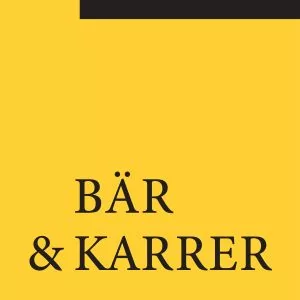- within Food, Drugs, Healthcare and Life Sciences topic(s)
- in United States
- within Food, Drugs, Healthcare, Life Sciences and Privacy topic(s)
In its decision of 14 December 2015, the Swiss Federal Supreme Court had confirmed that the practice of the Federal Office of Public Health (FOPH) which, in the course of the regular triennial review, determines the prices of drugs that are listed as reimbursable pharmaceutical specialties (Specialties List/SL) based on external reference pricing only, does not comply with the Swiss Health Insurance Act (HIA). As a consequence, the Swiss Federal Council has initiated a revision of the Ordinance on Health Insurance (OHI) as well as the Ordinance on Healthcare Services (OHS) in order to align the rules regarding drug pricing with the Supreme Court's case law. The revised ordinances will enter into force on 1 March 2017.
FOPH's Practice Regarding Price Reviews
Before including a drug in the SL and every three years thereafter, the FOPH examines whether a drug meets the requirements for such listing, i.e. that it is effective, appropriate and efficient (so called EAErequirements). In principle, the efficiency is evaluated based on external reference prices (ERP) and internal reference prices (IRP). When an ERP is established, the price of a drug is compared to the price of the same drug in countries with similar economic structures in the pharmaceutical area, the so called reference countries (currently: Germany, Denmark, France, Great Britain, Austria, Belgium, Finland and Sweden). The IRP is based on a price comparison with other drugs included in the SL that have the same indication or a similar mode of action. However, for the triennial review, as a general rule, only the ERP had been taken into account but not the IRP. The SLprice is the maximum price that is reimbursed by the mandatory health insurance (MHI).
Successful Appeals to the Swiss Federal Administrative Court and the Swiss Federal Supreme Court
With its leading case C 5912/2013 of 30 April 2015, the Swiss Federal Administrative Court approved a marketing authorization holder's appeal that was directed against a decision of the FOPH regarding a triennial review, in which the drug price was cut only based on an ERP, excluding the IRP. With its decision 9C_417/2015 of 14 December 2015, the Swiss Federal Supreme Court confirmed the Swiss Federal Administrative Court's decision.
The courts concluded that whether a certain drug is efficient in the sense of the HIA can only be decided by comparing different cost benefit ratios. By refraining from carrying out an IRP in the course of a triennial review, possible changes within the SL, in particular new and substantially more effective drugs, or new studies on the effect of the drug under review, are completely disregarded. The legislator's explicit aim to eliminate uneconomical services is thereby undermined. Therefore, the FOPH's practice to take into account the IRP only when listing a drug in the SL but not in subsequent price reviews, which is applied since 2009, violates the law and the constitutional principle of legality. Only the legislator could have decided such a system change by amending the HIA. The courts remained silent on the relative weighting of the ERP and IRP.
The Federal Council's Response
As a response to the court decisions that found the FOPH's practice and the legal basis in the respective ordinances to be unlawful, the Federal Council made an announcement in February 2016. The council advised the pharmaceutical companies concerned that the respective provisions in the ordinances will be revised and aligned with the case law. The triennial price review of 2016 was cancelled, and the next regular review was scheduled to take place in 2017 in accordance with the then effective, new regulations. However, additions to the SL and other reviews (e.g. changes of indications/limitations) continued to be decided in accordance with the existing rules.
The draft for the revision of the OHI and OHS was published in July 2016. After consultation and analysis of the feedback, the final versions of the OHI and OHS have been published on 2 February and will enter into force on 1 March 2017. Further, it is to be expected that a revised version of the SL manual, the FOPH's guidance on the application of the provisions regarding the SL, will soon be published.
New Rules as of 1 March 2017
Examination of Requirements for Listing
The requirements for examining whether a drug still meets all conditions for listing in the SL will, in principle, be the same for all examinations (at the time of inclusion, at the triennial review, etc.). First of all, apart from the efficiency, the efficacy and appropriateness must always be reviewed as well. Further, for each review of efficiency, an ERP as well as an IRP will need to be established, and each will be weighted 50% (until now: 2/3 to 1/3). Uniform rules regarding the review of efficiency replace the special rules for triennial reviews or other reviews. Also, any type of capping for taking into account the IRP with regard to the ERP has been dropped (until now: cap of ERP+5%). The possibility of applying the so-called prevalence model in cases of indication expansions / alteration of limitations is still retained.
The IRP is now to be determined in comparison to drugs that are used to treat the same disease. Until now, the comparison included drugs with the same indication or a similar mode of action. Whether the existing uncertainties can be eliminated with this change is quite doubtful. Rather, it is to be expected that new difficulties regarding interpretation and necessary distinctions will arise. When including a drug in the SL, according to the explanations on the changes of the ordinances, the IRP may in the future be established also in comparison to originator products that have lost patent protection. Here too, significant legal uncertainties remain. For IRPs determined in the course of triennial reviews, prices as of 1 January of the review year will be taken into account with price changes to be considered until 1 July of the review year. Until now, when establishing an IRP, it was referred to the future prices that became valid only as of 1 September of the review year, which has led to considerable legal and factual difficulties.
The effective date for price cuts has now been moved from 1 September to 1 December of the respective review year, in order to take the comprehensive review process into account.
Reviewing Requirements for Inclusion after Patent Expiry
For reviews upon patent expiry, the IRP is determined exclusively compared to originator products that have lost patent protection, without taking into account an innovation premium. As before, there is no comparison with generic drugs which are subject to different pricing mechanisms.
Under the new regulations, the FOPH will only conduct a review after patent expiry when an originator product has lost all relevant patent protection and market entry of generic drugs is possible. Consequently, process patents will be taken into account as well. However, patent protection which remains for a specific indication is disregarded. Therefore, an originator product will be reviewed as soon as at least one indication is not patent-protected anymore.
Adjustments Regarding Generic Drugs
In order to increase cost savings for generic drugs, the price gaps between originator products and generic drugs have been adjusted. When included in the SL, generic drugs must now be between 20% (in case of small market volumes; until now 10%) and 70% (in case of large market volumes; until now 60%) cheaper than the factory price of the originator product after patent expiry. In this respect, the market volume of each commercial form of the same active ingredient is now taken into consideration separately, and not collectively for all commercial forms of an active ingredient anymore. The FOPH will define the different commercial forms (i.e. the galenic formulations such as pills, syrup, lotions, etc.) in the SL-manual.
Compared to the listing in the SL, smaller price gaps between originator products and generic drugs are applicable for triennial reviews of generics. Depending on the market volume, the price gaps will now be between 10% and 35% (until now either 10% or 20%).
The Federal Council has already announced to suggest a reference pricing system for generic drugs, according to which the FOPH would define a uniform maximum price for each active ingredient. This, however, requires a revision of the HIA which will be submitted for consultation in 2017 with the goal to enter into force in 2020.
Increase of Transparency
Apart from the fundamentals for assessing the efficacy and appropriateness as well as the IRP and the innovation premium, the FOPH will henceforth publish the average factory price in the reference countries that results from the ERP as well.
Transitional Provisions: Application to Pending Applications
The drafts for consultation had not yet contained transitional provisions. The final versions of the ordinances now make it clear that the new provisions also apply to applications that are pending with the FOPH on 1 March 2017.
Further Amendments
Besides the new rules regarding pricing of drugs, further subject matters have been revised too:
- The provisions regarding the reimbursement of drugs that are not included in the SL have been rearranged and their content has been adjusted. For determining the price, the participation of the marketing authorization holder is now required, and a decision on reimbursement must be rendered within two weeks after a complete application has been submitted. However, the substantive requirements for reimbursement have not been changed. Apart from that, the Federal Council has rejected to introduce reimbursement of drugs used in clinical trials by the MHI.
- The threshold for increasing the patient's contribution has been lowered in order to achieve further cost savings for the benefit of the MHI. Until now, for an increase of the contribution from 10% to 20%, it was required that the respective drug is at least 20% more expensive than the average of the least expensive third of all drugs with the same active ingredients. Now the higher contribution already applies if there is a difference of at least 10%.
Conclusion
With the entry into force of the revised versions of the OHI and OHS, a process that has been going on for several years and that has been very demanding for the authorities, the pharmaceutical companies, and the courts, has been completed for the time being. With its revision project, the Federal Council tried to eliminate the identified deficits. Nevertheless, considering the wide discretion of the FOPH when determining the IRP (and ERP), it is to be expected that new legal and factual issues will arise which again will ultimately have to be clarified by the courts. Also, the FOPH and the pharmaceutical companies will have to face a significant amount of additional work caused by the substantially more comprehensive review of the requirements for inclusion.
The content of this article is intended to provide a general guide to the subject matter. Specialist advice should be sought about your specific circumstances.



